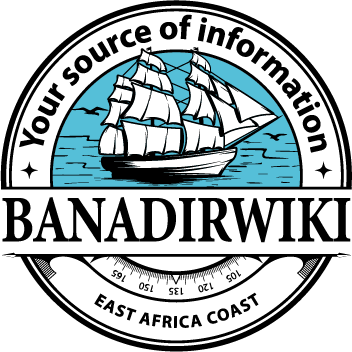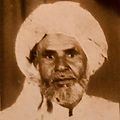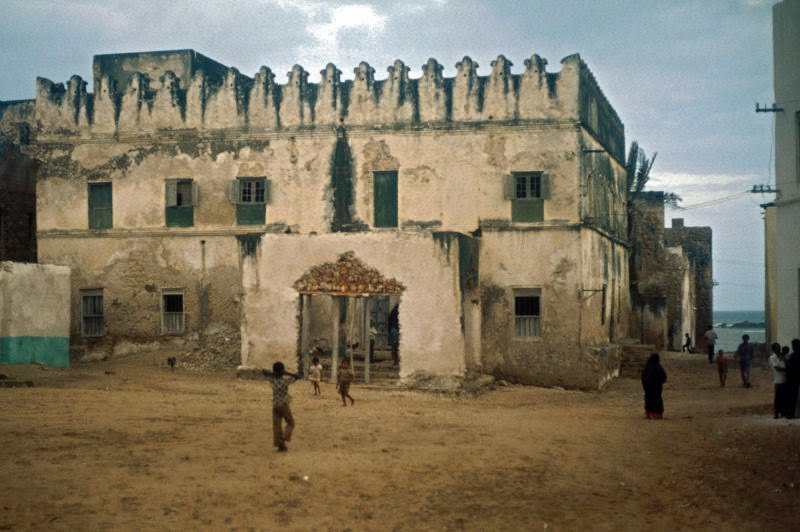Written By Abdi Mohamud
Swahili Coastal region of East Africa starts from Mogadishu in southern Somalia to its northern end to Kilwa in the south of Tanzania, the Bay of Sofala in present-day Mozambique, the further, the northern tip of Madagascar. This region is also historically known as Azania or Zingion (Zinj). Contemporary historians neglected the history of some parts of the Swahili Coast of Somalia and concentrated their research on the Kenyan, Tanzanian, and Mozambican parts of the Swahili Coast. Arabs, Persians, and other migrants reached the Swahili coast around the 7th and 8th centuries. Persian and Arab traders established business contacts with east Africans over 1,000 years ago. These relations, coupled with refugees who fled the turmoil in Arabia after the death of Prophet Muhammad (peace upon him) in the 7th century, resulted in a significant number of Arab immigrants residing on the coast of east Africa. The mixing of the coastal Bantu-speaking African people with these Arab immigrants led to the emergence of the Swahili people and language. New scholarship understands Swahili as home to African populations and similarities between inland and coastal sites show that they were part of the same society. CLIEK HERE to see the map of the Swahili Coast on Google Maps
What does the term “Bantu” mean?
The term Bantu has a different meaning that has had both positive and negative connotations, depending on the historical moment, social positionality, and experience of users. I, as a Somali person, personally do not like using the term. I am using this article for my readers to understand my narrative of the group of people I am talking about. Anthropologically, the term “Bantu” was historically used by the colonist in the Zulu word “Umuntu” meaning a “person” therefore, “Bantu” is the plural of Umuntu, which is “people.”
About 3,000-5000 years ago, speakers of the proto-Bantu language group began a millennia-long series of migrations; it split off from Proto-Southern Bantoid when the Bantu expansion began to the south and east of Africa (Vansina 1995). “Bantu” is a linguistically-related social groups (clans) in Africa. The ancient “Bantu” people of this region were influenced by agriculture and animal husbandry aided by regular annual rainfall and shallow coastal waters with plentiful seafood in the 1st millennium during the Iron Age. “Bantu” farmers, who are indigenous communities within the region, built communities along the Swahili Coast. the Swahili people originate from Bantu inhabitants of the coast of Southeast Africa. The communities settling along the Swahili Coast shared archaeological and linguistic features with those from the interior of the continent (Berger et al. 362).
Swahili Language
Swahili is also a language spoken in this region as the indigenous African language “Bantu,” later, became a mixture with Arabic and other languages and became the lingua franca of East Africa due to the Bantus’ interaction with Arab traders in the middle of the 1st millennium CE (Ibn Battuta 1304 – c. 1368). The Kiswahili language is an archive that offers a rich entry point into the study of the region, as it is a Bantu- (African) language to which other words in Arabic and other languages were added. Bantu words in Swahili are viewed as the oldest parts of the language. Click Here “A Brief History of the Swahili Language.”
For a long time, biased perspectives of both Arabs and Africans believed that the uniqueness and cosmopolitan aspects of the Swahili were because the Swahili were “Arab immigrants;” however, this argument has disregarded the ancient history of the continent, particularly in the region. From both ancient and modern migrations, there was a deep connection between East Africa, Arabia, and Asia. Trade and migration from the Swahili coast during the nineteenth century helped spread the language to the interior (inland) particularly where today are Tanzania, Uganda, Rwanda, Burundi, Congo, Central African Republic, and Mozambique.
The Expansion of Swahili People in the Sub-Saharan Africa
During this time, the Swahili people expanded their trade and communication further inland and to the south with the other African groups, including ancestral clans of east Africa. The Swahilis distinguish themselves according to their region, island, or town of origin. Modern Swahili identity remains multiple, incorporating populations of diverse backgrounds, Bantu, Nilotic, Cushitic, and Austronesian. From my personal experience as being Somali national who traveled to many Kenyan and Tanzanian coastal cities, Swahili culture reflects neither a specific ethnic group nor a particular nationality but a unique diverse of people with a rich mixture of cultural heritage.
Portuguese and Oman occupation in the Swahili Coast
Portuguese arrived at Swahili Coast in the 15th century in northern Mozambique to southern Somalia. The Portuguese were finally ousted in 1730 by forces loyal to the Sultanate of Oman. Somali coastal cities were included in the Oman Sultanate. 18th century, the increased demand for cheap labor around the world, the Sultan of Oman, Sayyid Said, relocated his power from Oman to the east African island of Zanzibar in 1840 to take advantage of the slave business. The Sultanate’s sovereignty extended from northern Mozambique to southern Somalia. Africans from these areas were abducted into the slave trade (Dan & Omar Enow, 2003). Unfortunately, most contemporary historians only focus their research on this historical period.
The history of the slave trade in this region ignored the vital evidence of the existence of the indigenous “Bantu” societies on the Swahili Coast. For instance, ethnic-Somali people and a few Arab commentators argue that the “Bantu” people came to where is now “Somalia” as slaves, which is not. Ibn Battuta noted that the majority inhabitants of this region are Zanj (“Black people” in Arabic). Archeological and linguistic evidence suggests that there was a Bantu population in the region, the fertile river valleys of Jubba and Shabelle, and all the way to Mogadishu. “Bantus” in Somalia have retained many separate cultural traditions and characteristics which date back to different earlier historical periods. These traditions have merged into new social formations in Somalia. The term “Bantu” derived from the late 20th-century recognition of their Black African origin, appearance, cultural heritage, and language by Europeans. They were traditionally incorporated as inferiors into modern Somali clans and lineages.
Medieval Swahili Trading Cities (From North to South).
- Mogadishu
- Merca (Marka)
- Barawa (aka Brava)
- Kismayu
- Bur Gao (aka Shungwaya)
- Ungwana
- Malindi
- Gedi
- Mombassa
- Pemba
- Zanzibar
- Mafia
- Kilwa
- Ibo
- The Comoro Islands
- Mozambique
- The northern tip of Madagascar
Bibliography:
Berger, Eugene, et al. World History: Cultures, States, and Societies to 1500. University of North Georgia Press, 2016.
Oliver, R.A. Cambridge Encyclopedia of Africa. Cambridge University Press, 1981.
The Swahili Coast and Indian Ocean trade. The Swahili Coast and Indian Ocean Trade | African Studies Center. (n.d.).
Vansina (1995) quoted by Schadeberg, T. C. in Nurse, D. & Philippson, G. (eds) (2006) The Bantu Languages, p. 160.










